Fish farming, commonly known as aquaculture, is a common practice worldwide and forms a large part of the food industry. Fish farming allows us to replenish the supply of food fish from the oceans faster, allowing suppliers to keep up with demand. Fish farming is the commercial rearing fish in tanks and ponds for food production. We’ll take you step-by-step, from how to get started to how to run a fish farming business.
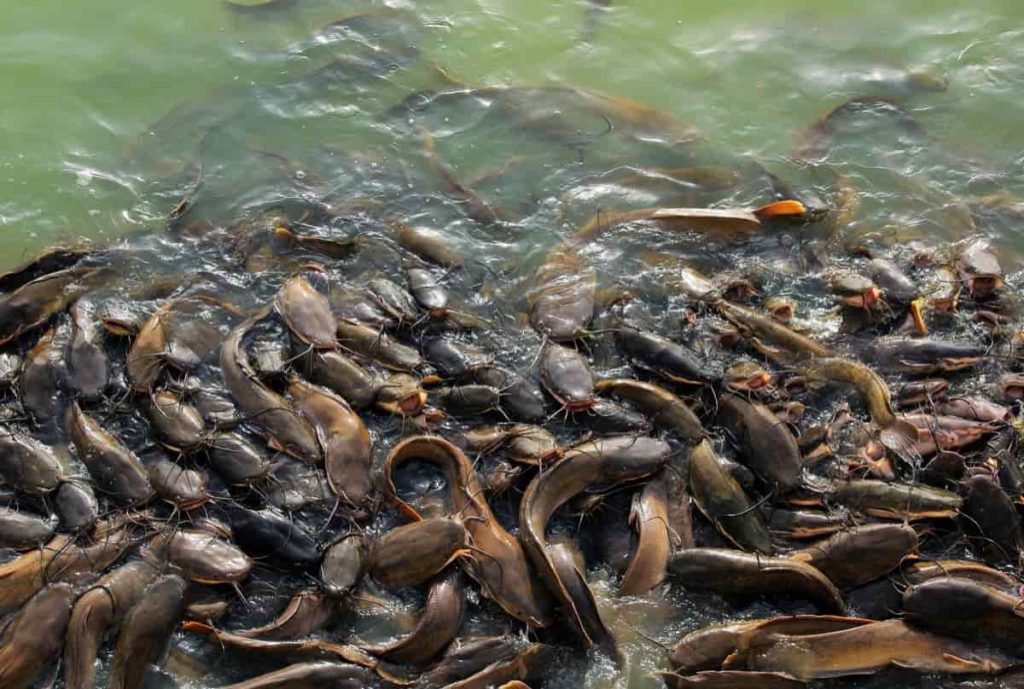
How to start Fish farming from scratch
Is fish farming a good business?
- Commercial fish farming is a profitable business enterprise already around the world. As a major food source and protein, fish is in high demand, and the prices of fish and fish-related products are increasing rapidly with population growth.
- Fish farming is very profitable. As with other forms of agriculture, profit levels are rarely excessive. Fish farming is a good retirement activity. However, running a fish farm is physically demanding and can be stressful. Fish farming (aquafarming or aquaculture) is farming fish and other aquatic animals such as crustaceans or mussels. Unlike commercial fishing, where wild fish are harvested from our oceans, fish farming uses a controlled and confined environment to raise these aquatic animals until they are ready for processing.
How much money is required to start fish farming?
- Fish farming commercially produces aquatic organisms in a controlled or semi-controlled environment to increase productivity.
- Generally, a minimum of Rs. 50,000 per acre (excluding land cost) is required to complete the ponds and stocking. Recurring expenses like fertilization, staff salaries, construction of ponds, etc., will be the case. The most important reason to start a fish farming business is that fish is in great demand in India and other parts of the world.
What is the best time to farm fish?
- The best period for fish farming is March/April to October/November, and smart management tips can significantly increase the yield as well as the income of the farmers.
- Fish grow very quickly because fish farming makes it possible for farmers to increase the growth rate of fish with specific feeds, thus ensuring that you harvest and sell them in less time.
How do you calculate fish feed?
- The feed conversion ratio is calculated as the feed fed to fish divided by the weight of fish growth. For example, if a fish is fed 10 pounds of feed and then gains 5 pounds, the FCR is 10/5 = 2. An FCR of 1.5-2.0 is considered good growth for most species.
- For the fish to thrive, you must ensure that they survive to complete their growth cycle. It is also important that the fish breed naturally.
- It will mainly help increase the number of fish. So you should feed the fish the right kind of food. You must choose the right fish food. The feed should be chosen according to the species of fish you have on the farm.
- You also must maintain proper hygiene and the water temperature in the pool. It means you will have to test it for salinity and pH regularly.
In case you missed it: How to Build a Fish Pond for Beginners: For Backyard, Outdoors, Start with Best and Cheap Ideas
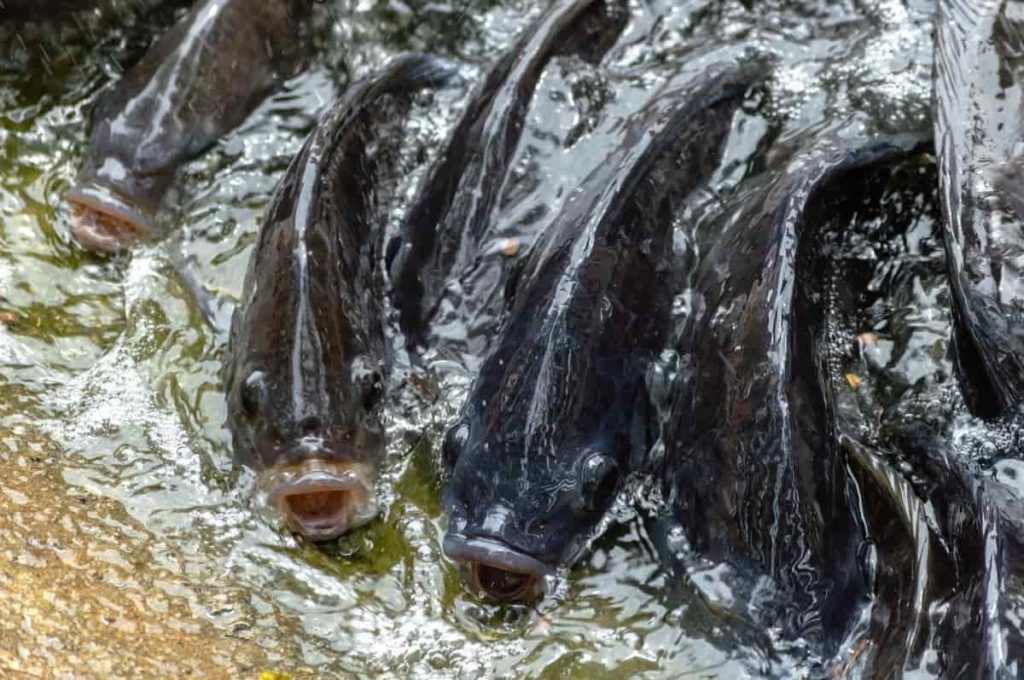
What nutrients do fish need?
- The main minerals that fish needs are calcium and phosphorus. Fish also need trace amounts of iron, sodium, chloride, iodine, magnesium, potassium, sulphur, copper, and zinc.
- While rearing fish in ponds, feed is given to ensure that the fish attain maximum marketable weight in the shortest possible time. However, care must be taken during feeding and rearing to maintain the pH of the water between 7 and 8 for optimum growth. Feed must provide the nutrients necessary for growth, maintenance, and reproduction.
- Providing your fish with proper care and food will make them gain weight faster and grow faster. You can also increase algae growth in a pond by adding chicken droppings or compost. They will grow rapidly, therefore providing additional sources of food. Morning and afternoon feedings are best. Ensure you don’t leave uneaten food in the fish pond for several hours because it can be toxic. When purchasing supplements, specify the species you are raising, as there are different supplements for different species.
Can I do fish farming at home?
- You can grow or raise fish in backyard ponds or fish tanks. Common fish that can be easily farmed for commercial or personal consumption are tilapia, carp, salmon, and catfish.
- Growing fish in a backyard or fish tank can be fun and rewarding. It is an innovative way to set up a fish farm when you can choose a small enclosure. You may have to project the entire setup into a small area and then start over.
- You may have to take care of most things yourself. You have to check with water temperature and salinity or pH. You may have to install thermometers and other related devices in the room. You also need to ensure that the room has uninterrupted electricity and water supply to keep the fish safe.
How do I start a fish business?
- Decide on the species of fish
- Choose how to farm your fish
- Name your business
- Create a fantastic business plan
- Handle the legal stuff
- Decide on a location
- Get all the necessary supplies
- Design your pool
Create a fish farming business plan;
Creating a business plan document is essential if you want to launch a successful fish farm. A business plan is a document serving as a blueprint for a company’s future operational efforts. Moreover, it is the most important factor for arranging investment capital. Your fish farming business plan needs to address several basic issues, such as the following:
- Start-up and recurring costs for running a fish farm
- Your target customers
- Pricing plan
- Profit margin
In case you missed it: 22 Key Rules for Effective Fish Farm Management: From Planning to Reducing Production Cost
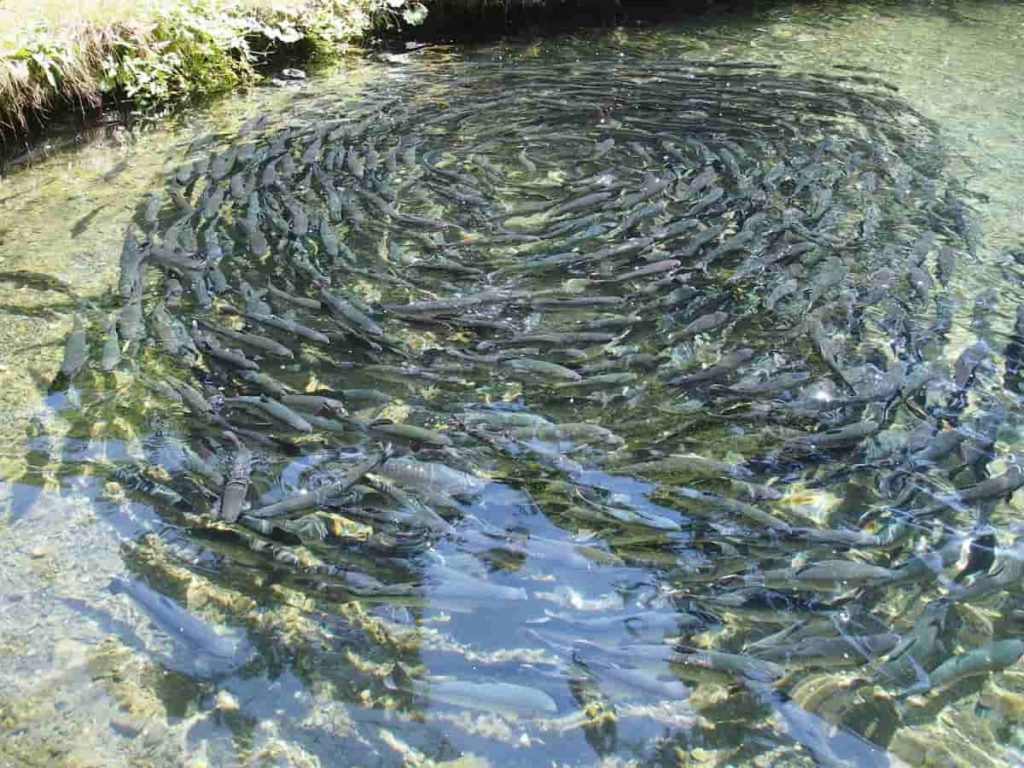
What is the easiest fish to farm?
- Tilapia is the easiest fish to farm. Tilapia tolerate various water conditions, including low oxygen levels and high ammonia concentrations, and are resistant to disease and parasites.
- Selection of Fish breed – The next step after constructing the pond is selecting the right fish species to keep. Choosing the right fish type depends on the type of water in the pond, availability of resources, climatic conditions, and market demand. For example, fish like Tilapia, Rohu, Catfish, Catla, Grass Carp, etc., are for Indian ponds. Some farmers grow two or more different species of fish in the same pond, which ensures better resource utilization. In terms of ornamental fish, some commercially important species are Loaches, Barbs, Freshwater Sharks, Danio, Goldfish, etc.
How many fish species can you have on a fish farm?
Tens of thousands of fish—or more—can be stocked on a single farm. Large farms can be the size of four football fields and contain more than 1 million fish.
What equipment need to start a fish farming business?
- Pumps
- Fish Counters
- Water Testing Equipment
- Nets/Seine Reels
- Fish Tanks / Ponds
- Aeration Equipment
- Fish Graders
Natural or Plastic Pond – One of the most important things you may need when considering fish farming. You can use them as a large-size fish tank. It is also best for people to start this business using a tank in a small room. You can also check out the artificial pools available on the market. The cost factor can vary depending on quality and size.
How long does fish farming take?
- The fish must be ready for harvest within six to nine months.
- Stop feeding the fish two days before harvest.
- Prepare tools (seine nets, plastic buckets, scales) and labor for harvesting.
- Harvesting is done early in the morning.
- Commercial fish farming has established lucrative business opportunities around the world. Hence the demand and price of fish products have increased rapidly along with population growth.
Which fish species is best for biofloc fish farming?
Let us look at some fish that best adapt to the biofloc method and produce a high-quality yield in a BFT environment for your biofloc fish farm.
- Tilapia
- Salmon
- Catfish
- Carp
- Trout
- Bass
Is selling fish a good business?
Selling fresh fish is a profitable fishing business that anyone can start. In this, you don’t need to be a fish farmer to run a fish shop successfully. If you have access to fishermen, you are good to go. You can open a fresh fish business at a food hub or farm market. Farmed fish provide high-quality protein for human consumption. Fish farming can be integrated into an existing farm to generate additional income and improve water management. Farmers can select fish species with desirable characteristics for rearing.
In case you missed it: How to Start Fish Farming on Terrace at Home: in Tanks on Small Scale, and a Guide for Rooftop Fish Farming
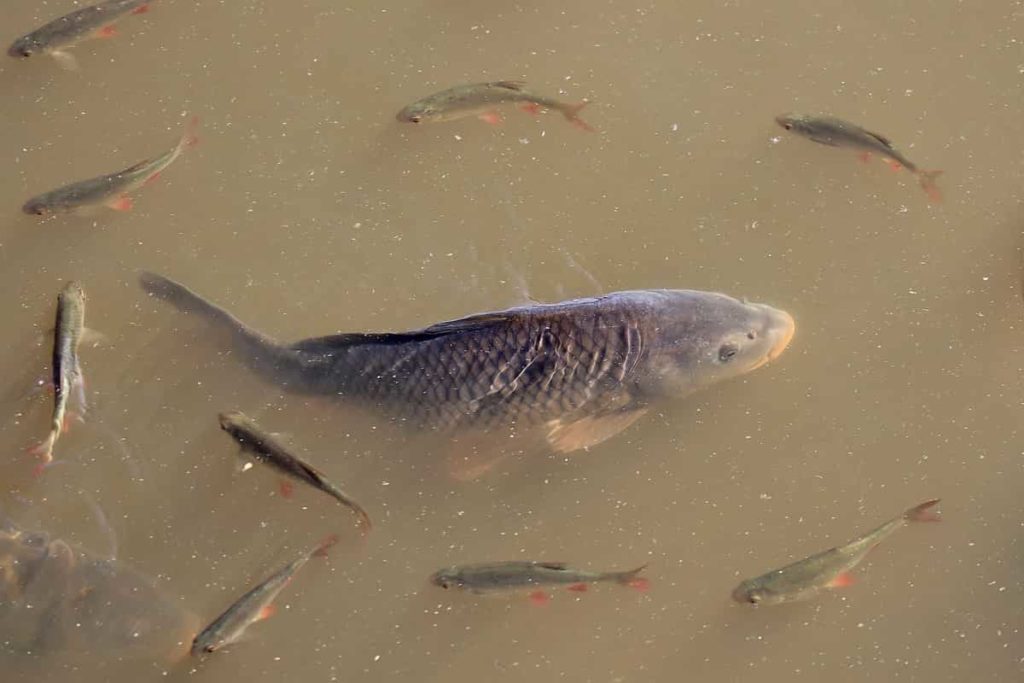
What are the benefits of fish farming?
Some benefits of fish farming (also known as aquaculture) include managing supply and demand in the seafood industry, keeping fish prices reasonable, and partially reducing overfishing in the wild. Benefits of fish farming are:
- Stable supply and demand
- Top consumer choice
- Steady growth pattern
- More income
- No environmental hazard
- An easy addition to normal farm activities
- Any fish can be reared
- Ease of access
Fish growth in ponds can be controlled: farmers themselves choose the species of fish they want to raise. The fish produced in the pond is the owner’s property; they are safe and can be harvested at will. Fishing in wild waters is a free-for-all and leaves individual stakes in the common catch uncertain.
What are the main problems in fish farming?
- The main problem in fish farming is the non-availability of good quality stock. To overcome this problem, methods of breeding these fish using hormonal stimulation in ponds have now been worked out. It ensures the supply of net fish stocks in the required quantity.
- Disadvantages of fish farms: There is a high risk of disease because the fish can be closely related due to selective breeding and living together. Sterilized water, pesticides, and antibiotics may be needed to control the disease.
- Control diseases, parasites, and predators – Always keep the fish pond clean to prevent the entry of diseases and parasites. You can get help from an aquaculture professional about the drugs you can use when treating a sick fish.
What is fish production?
Fish production initially depended on fishing. However, most fish caught were used for industrial purposes and were hardly used by humans. Therefore, an alternative approach was devised to increase fish production, which involves the cultivation and rearing of economically important aquatic organisms. It is known as aquaculture. About half of the fish consumed today is raised globally through aquaculture. Some commonly farmed fish species include Tuna, Salmon, Halibut, Cod, and Trout.
Aquafarms can be in the form of submerged mesh cages or concrete enclosures on land. However, fish farms can damage ecosystems by introducing diseases, pollution, and invasive species. Fish farmers must take care of the fish and their numbers and ensure that they grow in size to be sold in the market at a profitable price. Fish farm is a business that offers you ten times more profit than the start-up money.
How much profit is there in a fish farm?
- Fish farming is a very profitable business. With proper planning and good fish farm management, profits can easily be made within six months. If you invest around Rs.1 lakh, you can generate more than Rs.3 lakh as a profit margin. It may also depend on production, marketing, and other factors.
- As one of the most abundant protein sources, fish is widely consumed. It means that the demand for this product is constant throughout the year, and since the fish grow fast, there is always enough to supply. Therefore, investing in fish farming will yield steady returns over time.
- There are two types of investment in this farming industry. The first is a fixed capital cost, while the second is an operating cost. Land and buildings, craft ponds, transport vehicles, plumbing fixtures, many tanks, oxygen meters, etc. are all included in the capital cost. Operating costs include purchasing eggs or fingerlings, fish feed, electricity, fuel, labor, chemicals, drugs, taxes, insurance, telephone, transportation, and other maintenance costs.
What makes fish grow faster?
The growth pattern in fish is very fast and easy to understand. Farmers can speed up the growth process of fish by feeding them growth-enhancing foods. This characteristic of the fish ensures that farmers can harvest and sell in a very short time.
Ways to grow fishes faster;
- Ensure your fish are well fed to get the proper nutrients for growth.
- Make sure you change the water in the fish tank regularly to maintain good water quality in the tank.
- Keep the fish in a large tank with a large volume of water, as small tanks will stunt the fish’s growth. If you didn’t know before, they need a lot of water to grow well.
- Do your best to regulate the temperature of the tanks, as some fish need higher temperatures while others need lower temperatures. So try to find out which one is best for your fish.
- If you are struggling with keeping the water temperature in your fish tank during hot or sunny weather, you can try to reduce the amount of sunlight reaching the fish tank by trying to cool the water. You can try or float some ice packs in the water and monitor the fish tank from time to time. Note the emphasis on “ice pack float” because rapid water changes can harm fish.
- Monitor water quality.
- Provide your fish with high-quality food.
- Provide a large tank for your fish.
- Let the fish’s timing be consistent.
- A clean tank is essential.
How much land is required to start fish farming?
Selecting the right location is one of the most important factors determining a fish farm’s success. Before constructing a pond, the soil’s water-holding capacity and soil fertility have to be taken into account, as these factors affect the response of organic and inorganic fertilizers to farm ponds. The selected site should have an adequate water supply for pond filling and other uses throughout the year. Pond construction must be based on the topographic area.
In swampy and swampy areas, the embankments should have more soil storage to create a pond of better size. Self-draining ponds are ideal for high-altitude areas. Also, access to inputs such as feed, seeds, fertilizers, and construction materials should be available close to the site. Finally, the site must be free from pollution, domestic waste, and other harmful activities. An adequate amount of water is necessary to create a fish farm as the water depth needs to be adjusted regularly.
In case you missed it: How to Start Cage Culture Fish Farming in India: Types, Cost, Profit, Report, and Management
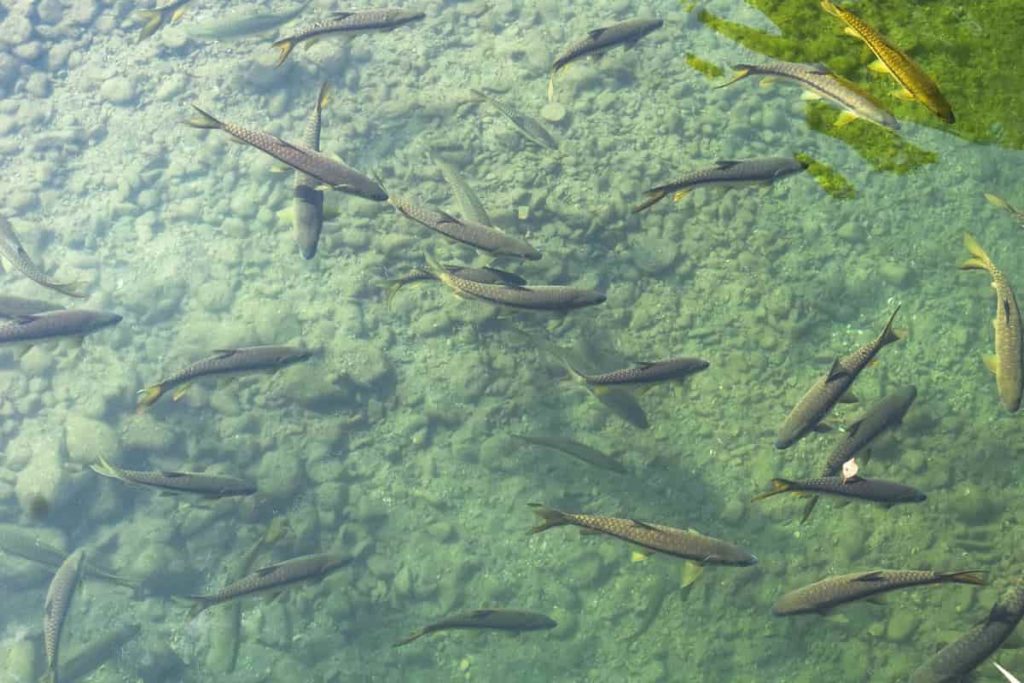
Natural water bodies like reservoirs, rivers, and lakes have different water quality standards (water temperature, dissolved oxygen, pH, alkalinity, and water hardness) compared to bore wells and well water. In addition, the site must be away from the flood zone. The ideal water temperature for fish farming is 20-30°C. The salinity of the water is the amount of dissolved salt in the water. Some freshwater fish species, Tilapia and Catfish, thrive in brackish water, but carp can only survive in freshwater.
What is cage fish farming?
Cage aquaculture involves growing fish in existing water resources while being enclosed in a net cage that allows the free flow of water. It is an aquaculture production system composed of a floating frame, net material, and mooring system (rope, buoy, anchor, etc.). This method is mainly used in seas, oceans, and rivers. So while using this system, you will have to work and set up your business around such a system. Start-up costs are very low, but you may have to set up a cage in a river or ocean. But you must take precautions when setting up a cage in the sea or river bed.
Which method is best for fish farming?
Below are the most common methods used in fish farming. Fish farming can range from ‘backyard’ subsistence ponds to large-scale industrial establishments.
1. Economic and labor information is generally lacking in large-scale fish farming. Natural food production plays an important role, and productivity is relatively low. Manure can be used to increase fertility and thus fish production.
2. Semi-intensive fish farming requires moderate and intensive fertilizers and feed additives to increase fish production. It means more labor and feed costs, but higher fish yields more than compensate for this.
3. Intensive fish farming system involves a high level of information and a large stocking of fish in ponds. Fish are fed supplemental feed, while natural feed production plays a minor role. In this system, fish stocking density (increased susceptibility to disease and oxygen depletion) can create difficult management problems. High production costs force fish farms to fetch high market prices to make them economically viable.
Is a license required for fish farming in India?
Important requirements for obtaining a license for fish farming business Identification of the site where you intend to start a fish farm. Project formulation like plan documents and general estimate, bank loan documents if you have taken any loan on the land. You need to get training in the fish farming business.
It is important to get the business registered in India before starting. You have to register by submitting the Business Registration Form. You will be provided with a registration number. You have to get registered in government offices. You may be required to submit all details related to information about yourself and the business. You can also apply for subsidies under the government sector for business. If you are looking forward to starting this business by the sea or river, you may need special permission.
What are the steps in fish pond construction?
Keeping fish in ponds has some specific requirements. Before building a pond, choosing the right site type is important. An intelligent design and layout are prerequisites for building an efficient pool. The excavated earth should be used for making dikes with a gentle slope towards the outlet to facilitate proper drainage. Construction of the pond should preferably be completed in summer so the pond can be used for storage.
Steps in pond construction;
Generally, pond construction involves the following steps.
- Step 1: Prepare the land by removing unwanted objects such as trees, bushes, and rocks.
- Step 2: Construction of safe dyke using clay core.
- Step 3: Digging of pond and construction of dyke over the clay core.
- Step 4: Construction of inlet and outlet.
- Step 5: Pond dyke covered with soil.
- Step 6: The pond should be fenced to prevent theft and entry of predators.
In case you missed it: How to Start Perch Fish Farming: Raising in Ponds, and Cages, A Step-By-Step Guide for Beginners
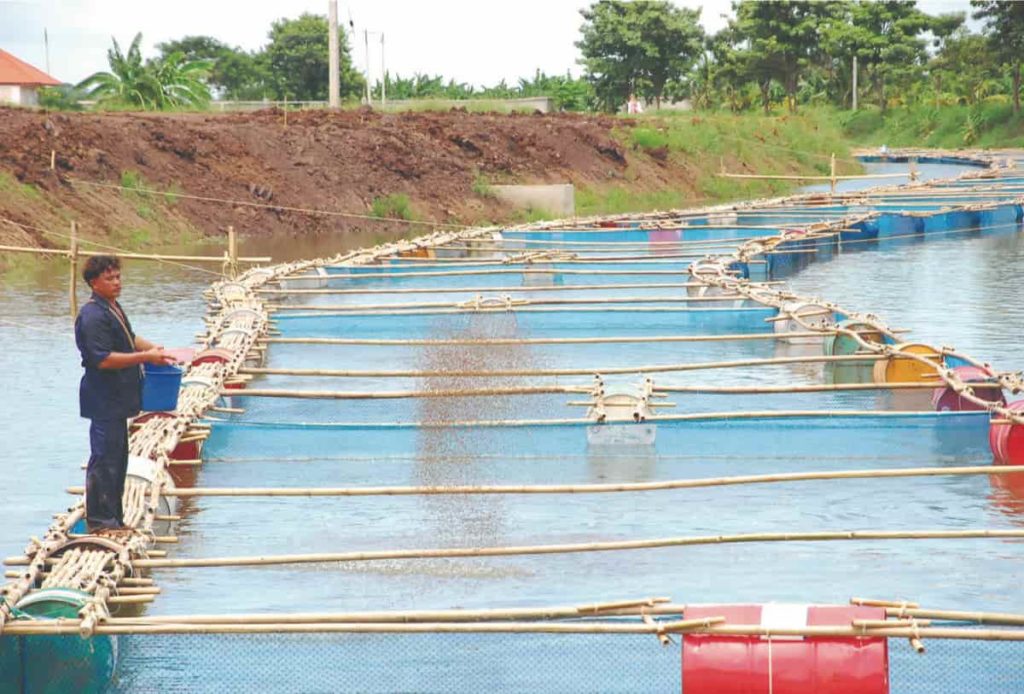
What are the types of fish farming?
- Pond systems: One of the oldest forms of fish farming, pond systems involve raising fish in a natural or man-made pond, ditch, or canal.
- Open net pens: Open net pens look like small cages that float on the surface of a large body of water. They are made of wood, metal, or bamboo and support a mesh wall that floats below the water’s surface. Fish are reared in these enclosures.
- Submersible net pens: They are similar to open net pens except that they are completely underwater. They consist of underwater mesh pans where the fish are raised.
- Recirculating systems: Among the most environmentally friendly aquaculture systems, recirculating systems allow fish farmers to raise fish in large indoor pond systems. A piping system pumps clean water into the tanks and filters out the dirty water, making the tanks mostly self-cleaning.
How can you get successful at fish farming?
If you generally had a drainable pond to harvest your fish by draining the water completely. In such a case, all the fish in it are removed, either inside or outside the pond. The basic rules for a successful fish farming business are;
- Choose your pond location carefully.
- Build and maintain your pool.
- Use the best quality fingernails.
- Feed your fish.
- Manage your ponds.
- Market your fish and manage your money.
- Record keeping.
How should we harvest fish?
Harvesting is done using a net or, in cases where you are harvesting whole fish, draining the entire volume of water. It should be noted that different food types are cultivated at different stages and weights. To get the maximum feed and provide quality fish to your customers, you must ensure that they are farmed correctly and at the right time.
Conclusion
Fish farming can be very profitable with proper planning and good management. Due to the high demand for fish in the market, its price is also high, which brings good income. With a brilliant fish farm business plan and the much-needed resources, anyone can achieve great success through fish farming. A primary advantage of fish farming is that it allows companies to grow fish almost anywhere and control the production of specific species, which ultimately helps meet consumer demand.
- Economical Aquaculture: A Guide to Low-Budget Fish Farming
- 15 Common Planting Errors That Can Doom Your Fruit Trees
- How to Make Houseplants Bushy: Effective Tips and Ideas
- Innovative Strategies for Boosting Coconut Pollination and Yield
- Pollination Strategies for Maximum Pumpkin Yield
- The Complete Guide to Chicken Fattening: Strategies for Maximum Growth
- Natural Solutions for Tulip Problems: 100% Effective Remedies for Leaf and Bulb-Related Issues
- Revolutionizing Citrus Preservation: Towards a Healthier, Greener Future
- Natural Solutions for Peony Leaf and Flower Problems: 100% Effective Remedies
- Maximizing Profits with Avocado Contract Farming in India: A Comprehensive Guide
- Natural Solutions for Hydrangea Problems: 100% Effective Remedies for Leaf and Flowers
- The Ultimate Guide to Choosing the Perfect Foliage Friend: Bringing Life Indoors
- From Sunlight to Sustainability: 15 Ways to Use Solar Technology in Agriculture
- The Ultimate Guide to Dong Tao Chicken: Exploring from History to Raising
- The Eco-Friendly Makeover: How to Convert Your Unused Swimming Pool into a Fish Pond
- Mastering the Art of Delaware Chicken Farming: Essentials for Healthy Backyard Flocks
- 20 Best Homemade Fertilizers for Money Plant: DIY Recipes and Application Methods
- How to Craft a Comprehensive Free-Range Chicken Farming Business Plan
- Brighten Your Flock: Raising Easter Egger Chickens for Beauty and Bounty
- How to Optimize Your Poultry Egg Farm Business Plan with These Strategies
- Subsidy for Spirulina Cultivation: How Indian Government Schemes Encouraging Spirulina Farmers
- Ultimate Guide to Raising Dominique Chickens: Breeding, Feeding, Egg-Production, and Care
- Mastering the Art of Raising Jersey Giant Chickens: Care, Feeding, and More
- Ultimate Guide to Raising Legbar Chickens: Breeding, Farming Practices, Diet, Egg-Production
- How to Raise Welsummer Chickens: A Comprehensive Guide for Beginners
- How to Protect Indoor Plants in Winter: A Comprehensive Guide
- Ultimate Guide to Grow Bag Gardening: Tips, Tricks, and Planting Ideas for Urban Gardeners
- Guide to Lotus Cultivation: How to Propagate, Plant, Grow, Care, Cost, and Profit
- Agriculture Drone Subsidy Scheme: Government Kisan Subsidy, License, and How to Apply Online
- Ultimate Guide to Raising Araucana Chickens: Breed Profile, Farming Economics, Diet, and Care
- Bringing Hydroponics to Classroom: Importance, Benefits of Learning for School Students
- Ultimate Guide to Raising Polish Chickens: Breed Profile, Farming Economics, Diet, and Care
- Ultimate Guide to Raising Australorp Chickens: Profile, Farming Economics, Egg Production, Diet, and Care
- Silkie Chicken Farming: Raising Practices, Varieties, Egg Production, Diet, and Care
- Sussex Chicken Farming: Raising Practices, Varieties, Egg Production, Diet and Care
- Homemade Feed Formulations for Livestock: Discover Cost-effective Starter to Finisher Feed Recipes